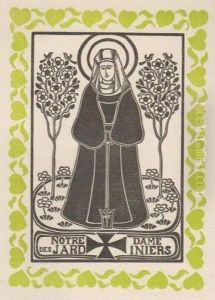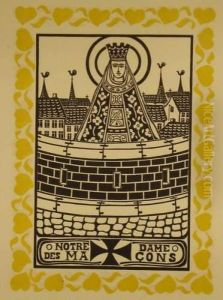Max Elskamp Paintings
Max Elskamp was a Belgian poet and artist born on May 5, 1862, in Antwerp. He is known for his Symbolist poetry and for his contributions to the art nouveau movement, though he is perhaps less widely recognized internationally than some of his contemporaries.
Coming from a wealthy family, Elskamp was able to devote his life to art and literature without the financial struggles that many other artists faced. He was educated at a Jesuit school and later studied commerce, which was intended to prepare him for a career in the family business. Despite this, Elskamp's passion for poetry and the arts led him to pursue a creative path.
Elskamp's work is characterized by a strong use of rhythm and a penchant for medieval themes and mysticism. His poetry often reflects a deep spirituality and a fascination with the divine. He was also influenced by the folklore and traditions of his native Flanders, and this is reflected in the regional character of his work.
In addition to his poetry, Elskamp was also known for his graphic design and bookbinding, which were in line with the art nouveau style that was popular at the time. His visual art is noted for its ornamental qualities and its integration of text and image, which was relatively innovative for the period.
Despite his contributions to the arts, Max Elskamp did not gain the same level of fame as some of his Symbolist peers such as Maurice Maeterlinck or Émile Verhaeren. Nonetheless, he is still remembered and respected in Belgium for his artistic legacy.
Max Elskamp lived through the tumultuous times of World War I, which impacted Belgium greatly. However, there is little record of how the war affected him personally or his work. He continued to write and create art until his death on December 10, 1931, in Antwerp. Today, Elskamp's work is preserved in various collections, and his poetry continues to be studied for its unique blend of mysticism, regionalism, and rhythmic innovation.

